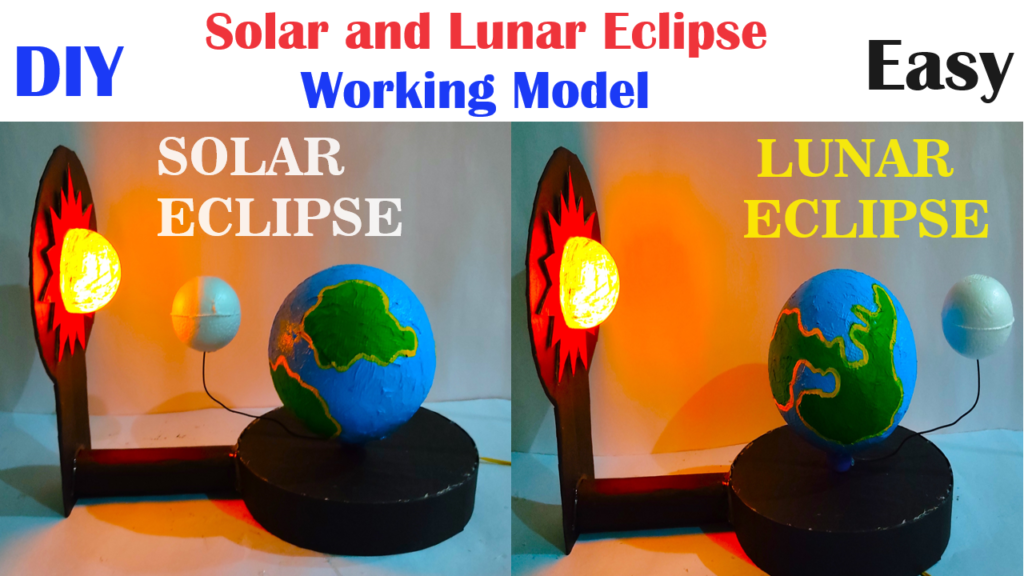Creating a solar and lunar eclipse working model using a big ball for the Earth, a thermocol ball for the Moon rotating around the Earth using a slow-running motor, and a big LED bulb for the Sun can be an engaging and educational project.

Here’s how you can do it:
Materials Needed:
- Big ball (for Earth)
- Thermocol ball (for Moon)
- Slow-running motor with attachment
- Big LED bulb (for Sun)
- Cardboard or foam board
- Paints or markers
- Color paper
- Glue or adhesive
- Scissors
- Power source (batteries or adapter)
- Small round object (for Moon’s shadow)
- Toothpick or thin stick
Step by Step Video Instructions on solar and lunar eclipse:
- Prepare the Earth:
- Use the big ball as the Earth model. Paint it blue and green to represent land and water.
- Place the Earth on a sturdy base.
- Create the Moon:
- Use the thermocol ball as the Moon model. Paint it gray or silver.
- Attach a small round object (representing the Earth’s shadow during a lunar eclipse) on a toothpick or stick and place it near the Moon.
- Attach Moon to Motor:
- Attach the slow-running motor to the back of the Moon using adhesive.
- Ensure that the motor is aligned properly so that when it rotates, the Moon orbits around the Earth.
- Create the Sun:
- Use the big LED bulb as the Sun model. Paint it yellow or orange.
- Decorate the LED bulb with color paper or markers to represent sunspots or solar flares.
- Set Up the Model:
- Place the Sun model on one side, slightly above the Earth model.
- Attach the Moon model to the slow-running motor, ensuring that it rotates around the Earth.
- Position the Moon’s shadow object so that it casts a shadow on the Moon during a lunar eclipse.
- Test the Model:
- Connect the motor to a power source (batteries or adapter) and turn it on.
- Observe how the Moon orbits around the Earth, causing different phases of the Moon.
- Move the Moon closer to the Earth to simulate a lunar eclipse, and observe how the Earth’s shadow falls on the Moon.
- Move the Earth between the Sun and the Moon to simulate a solar eclipse, and observe how the Moon’s shadow falls on the Earth.
- Explain the Phenomena:
- Use the model to explain the concepts of solar and lunar eclipses, including how they occur and why they look different from Earth.
- Demonstrate how the alignment of the Earth, Moon, and Sun causes eclipses to occur.
This working model provides a visual representation of solar and lunar eclipses and helps understand the celestial phenomena in a hands-on way.

